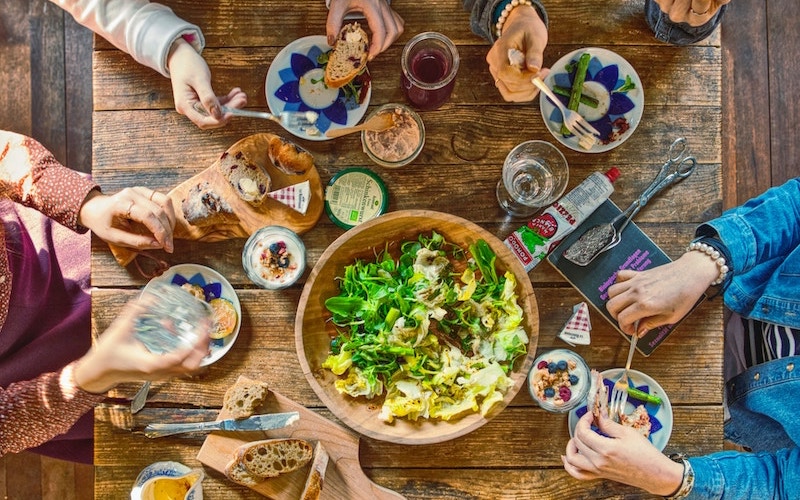
Diagnosing and treating Type 1 Food Trauma
Before you read on, I think it’s important to tell you that you won’t find Type I Food Trauma referred to in either the International Classification Of Diseases or the psychiatric Diagnostic and Statistical Manual 5. You also won’t find its sibling diagnosis – Type II Food Trauma.
But they’re both every bit as real as any other condition I’ve dealt with in clinical practice.
As you’ve likely worked out, both involve some sort of traumatic reaction to food. The Type II condition I see where a particularly emotionally negative event has become associated with a food – for example, when you had to spend a week living with your grandparents after your younger sibling was born and now that whole experience is inextricably linked with eating apricot chicken and rice for dinner.
But it’s Type I Food Trauma I want to address here. You’ve likely seen it in your own clinical practice, even if you didn’t recognize it. I’m going to tell you the good news up front – it’s easy to diagnose and easy to treat.
First – the diagnosis:
The presence, for as far back as the person can remember, of one or more of the following:
- An intense dislike of one or more foods, typically vegetables
- Habitual avoidance of this food and similar foods by extension
- Feelings of physical revulsion on exposure to discussion, images or ideas about this food
- Visible signs of revulsion such as wrinkled nose, lowered brows, narrowed eyes, protruded tongue and open mouth
- Saying aloud: “Yuk” or something similar
In my experience the most common vegetable that elicits this reaction is the humble Brussels Sprout. I’ll be honest with you here – I had T1FT for Brussels Sprouts for a lot of years myself – my mum used to boil them until they were mushy. As it turns out, I wasn’t alone! Other vegetables that I’ve seen this reaction for include cauliflower, broccoli, tomatoes, carrots, capsicum, mushrooms, beans and silver beet (and then by extension, any leafy green vegetable).
Once T1FT has been recognized the treatment is generally straightforward and involves a combination of graded exposure and reformulation of entrenched ideas about how the food in question should be prepared. This is where Lifestyle Medicine practitioners with a bit of passion for food and a flair for home cooking come in.
I typically start by asking my client: “What other ways of preparing and cooking X do you know?” The answer is usually “None”. Then I ask “How many ways do you know to prepare chicken?” (or pasta or whatever we’ve identified as a “go-to” food for them). Usually they have several ideas. Then through a process of questioning to learn what flavours they enjoy (think herbs and spices) and methods of cooking they enjoy (think grilling, baking, roasting, pan-frying), I come up with some ideas.
The treatment is generally short to medium term and small results are usually evident within one week. It’s common for residual signs and symptoms to remain but a similar treatment protocol can help resolve these too.
Since I’ve been talking about Brussels Sprouts, here’s a recipe I came up with that’s been a bit of a hit for even the most fervent Brussels Sprout hater:
OVEN ROASTED CAULI AND SPROUTS
Ingredients:
1 medium head cauliflower, pulled apart into small florets
12 Brussels Sprouts, stem trimmed and quartered
3+ cloves of garlic, roughly chopped (use as much as you enjoy)
1-2 TBSP Extra Virgin Olive Oil
2/3 tsp smoked paprika
½ tsp dried chilli flakes (optional)
Salt and Pepper – freshly ground to taste
Method:
Warm the oven to 220˚. Use either a cast iron skillet or cast iron/enameled baking dish.
In a bowl, add the Cauliflower, Brussels Sprouts, garlic, spices, salt and pepper. Toss until everything is well mixed.
Drizzle the oil, while continuing to toss.
Put into the skillet or baking dish.
Roast for 20 minutes or until the top of the vegetables are becoming charred/crisp.
Serve as a side dish or enjoy with some steamed brown rice.
This article has been written for the Australasian Society of Lifestyle Medicine (ASLM) by the documented original author. The views and opinions expressed in this article are solely those of the original author and do not necessarily represent the views and opinions of the ASLM or its Board.
Simon Matthews is the CEO of Wellcoaches® Australia. He’s a Registered Psychologist, Fellow of the Australasian Society of Lifestyle Medicine, and Member of the Australian Psychological Society.
More articles from Simon:
- Can you have too much empathy? [Commentary]
- Motivating behaviour change – the Engine Room of Lifestyle Medicine
- Is your patient ready for change?
- What would your colleagues say is your strongest skill in conducting a clinical interview? A Psychologist’s guide to high impact questions
- Managing lifestyle health changes with a depressed, anxious or stressed client
- The impact of dietary changes on symptoms of depression and anxiety [Commentary]
- Lifestyle Medicine support for bariatric patients
- Well this is awkward – we think our patients are unmotivated [Commentary]



